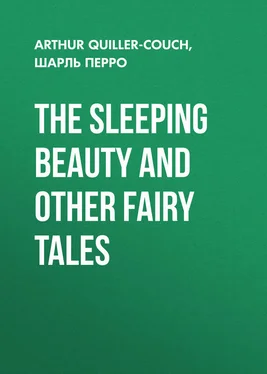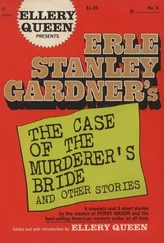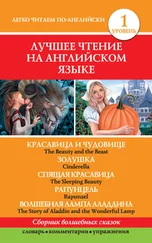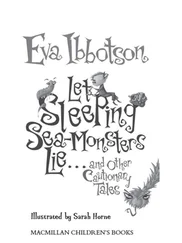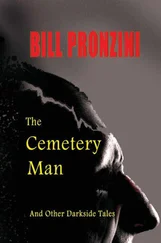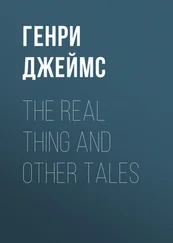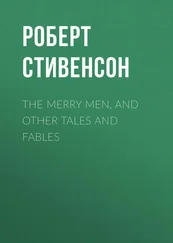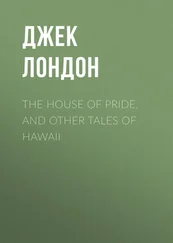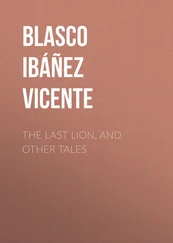Arthur Quiller-Couch - The Sleeping Beauty and other fairy tales
Здесь есть возможность читать онлайн «Arthur Quiller-Couch - The Sleeping Beauty and other fairy tales» — ознакомительный отрывок электронной книги совершенно бесплатно, а после прочтения отрывка купить полную версию. В некоторых случаях можно слушать аудио, скачать через торрент в формате fb2 и присутствует краткое содержание. Жанр: foreign_antique, foreign_prose, Сказка, на английском языке. Описание произведения, (предисловие) а так же отзывы посетителей доступны на портале библиотеки ЛибКат.
- Название:The Sleeping Beauty and other fairy tales
- Автор:
- Жанр:
- Год:неизвестен
- ISBN:нет данных
- Рейтинг книги:3 / 5. Голосов: 1
-
Избранное:Добавить в избранное
- Отзывы:
-
Ваша оценка:
- 60
- 1
- 2
- 3
- 4
- 5
The Sleeping Beauty and other fairy tales: краткое содержание, описание и аннотация
Предлагаем к чтению аннотацию, описание, краткое содержание или предисловие (зависит от того, что написал сам автор книги «The Sleeping Beauty and other fairy tales»). Если вы не нашли необходимую информацию о книге — напишите в комментариях, мы постараемся отыскать её.
The Sleeping Beauty and other fairy tales — читать онлайн ознакомительный отрывок
Ниже представлен текст книги, разбитый по страницам. Система сохранения места последней прочитанной страницы, позволяет с удобством читать онлайн бесплатно книгу «The Sleeping Beauty and other fairy tales», без необходимости каждый раз заново искать на чём Вы остановились. Поставьте закладку, и сможете в любой момент перейти на страницу, на которой закончили чтение.
Интервал:
Закладка:
Charles Perrault
The Sleeping Beauty and other fairy tales
PREFACE
Once upon a time I found myself halting between two projects, both magnificent. For the first, indeed – which was to discover, digest and edit all the fairy tales in the world – I was equipped neither with learning, nor with command of languages, nor with leisure, nor with length of years. It is a task for many men, clubbing their lifetimes together. But the second would have cost me quite a respectable amount of toil; for it was to translate and annotate the whole collection of stories in the Cabinet des Fées.
Now the Cabinet des Fées , in the copy on my shelves, extends to forty-one volumes, printed, as their title-pages tell, at Geneva between the years 1785 and 1789, and published in Paris by M. Cuchet, Rue et Hôtel Serpente. The dates may set us moralising. While the Rue Serpente unfolded, as though its playful voluminous coils, the throne of France with the Ancien Régime rocked closer and closer to catastrophe. In 1789 (July), just as M. Cuchet (good man and leisurable to the end) wound up his series with a last volume of the Suite des Mille et Un Nuits , they toppled over with the fall of the Bastille.
Tranquilla per alta,
Even so in England – we may remind ourselves – in 1653, when the gods made Oliver Cromwell Protector, Izaak Walton chose to publish a book about little fishes. But the reminder is not quite apposite: for angling, the contemplative man's recreation, was no favourite or characteristic or symbolical pursuit of the Order which Cromwell overthrew (and, besides, he did not overthrow it); whereas, M. Cuchet's forty-one volumes most pertinently as well as amply illustrated some real qualities, and those the most amiable of the Ancien Régime. When we think of the French upper classes from the days of Louis xiv. to the Revolution, we associate them with a certain elegance, a taste fastidious and polite, if artificial, in the arts of living and the furniture of life; and in this we do them justice. But, if I mistake not, we seldom credit them with the quality which more than any other struck the contemporary foreign observer who visited France with a candid mind – I mean their good temper. We allow the Bastille or the guillotine to cast their shadows backward over this period, or we see it distorted in the glare of Burke's rhetoric or of Carlyle's lurid and fuliginous history. But if we go to an eyewitness, Arthur Young, who simply reported what he saw, having no rhetorical axe to grind or guillotine to sharpen, we get a totally different impression. The last of Young's Travels in France (1787–1789) actually coincided with the close of M. Cuchet's pleasant enterprise in publishing; and I do not think it fanciful to suppose that, had this very practical Englishman found time to read at large in the Cabinet des Fées , he would have discovered therein much to corroborate the evidence steadily and unconsciously borne by his own journals – that the urbanity of life among the French upper classes was genuine, reflecting a real and (for a whole society) a remarkable sunniness of disposition. Unconscious of their doom, the little victims played. But they did play; and they fell victims, not to their own passions, but to a form of government economically rotten.
Of all the volumes in the Cabinet , possibly the most famous are the first and second, containing the fairy tales of Charles Perrault and Madame d'Aulnoy, and vols. 7–11, containing M. Galland's version (so much better than any translation) of The Arabian Nights . I hope that one of those days Mr. Dulac will lay the public under debt by illustrating all these, and the stories of Antony Hamilton to boot. Meanwhile, here are three of the most famous tales from Perrault's wallet, and one, the evergreen Beauty and the Beast , by an almost forgotten authoress, Madame de Villeneuve.
The ghost of Charles Perrault, could it walk to-day — perruque and all – might well sigh over the vanity of human pretensions. For Monsieur Perrault was a person of importance in his lifetime (1628–1703), and a big-wig in every sense of the term. Colbert made him Secretary of the Academy of Inscriptions, and anon Controller of Public Works – in which capacity he suggested to his architect-brother, Claude Perrault, the facade of the Louvre with its renowned colonnade. He flattered his monarch with a poem Le Siècle de Louis le Grand . 'Je ne sais,' observes a circle, 'si ce roi, malgré son amour excessif pour la flatterie, fut content: les bornes étaient outre-passées.' The poem, as a poem, had little success; but by positing that the Age of Louis was the greatest in history, and suggesting that the moderns were as good as the ancients or better, it started a famous controversy. Boileau, Racine, La Bruyère, honoured him by taking the other side, and forced him to develop his paradox in a book of dialogues, Parallèles des Anciens et des Modernes . But his best answer was his urbane remark (for he kept his temper admirably) that these gentlemen did ill to dispute the superiority of the moderns while their own works gave proof of it. He wrote other poems, other tractates (including one on the 'Illustrious Men of his Age'), besides occasional tracts on matters of high politics: and his memory is kept alive by one small packet of fairy-tales – stories which he heard the nurse telling his little boy, and set down upon paper for a recreation! That is the way with literary fame. To take an English example: it is odds that Southey, poet-laureate and politician of great self-importance in his day, will come finally to be remembered by his baby-story of The Three Bears . It will certainly outlive Thalaba the Destroyer , and possibly even the Life of Nelson .
As for Gabrielle Susanne, wife of M. de Gallon, Seigneur de Villeneuve and lieutenant-colonel of infantry (whom she outlived), she wrote a number of romantic stories — Le Phénix Conjugal, Le Juge Parvenu, Le Beau-Frère Supposé, La Jardinière de Vincennes, Le Prince Azerolles , etc. I am not – perhaps few are – acquainted with these works. Madame de Villeneuve died in 1755 and lives only by grace of her La Belle et La Bête ; and that again lives in despite of its literary defects. It has style; but the style inheres neither in its language, which is loose, nor in its construction. The story, as she wrote it, tails off woefully and drags to an end in mere foolishness.
Since Perrault, who is usually accepted as the fountainhead of these charming French fairy-stories, belongs almost entirely to the seventeenth century, it may be asked why Mr. Dulac has chosen to depict his Princes and Princess in costumes of the eighteenth? Well, for my part, I hold that he has obeyed a just instinct in choosing the period when the literature he illustrates was at the acme of its vogue. But his designs, in every stroke of which the style of that period is so unerringly felt, provide his best apology.
My own share in this volume is, perhaps, less easily defended. I began by translating Perrault's tales, very nearly word for word; because to me his style has always seemed nearly perfect for its purpose; and the essence of 'style' in writing is propriety to its purpose. On the other hand the late M. Ferdinand Brunetière has said that Perrault's is 'devoid of charm,' and on this subject M. Brunetière's opinion must needs out-value mine ten times over. Certainly the translations, when finished, did not satisfy me, and so I turned back to the beginning and have rewritten the stories in my own way, which (as you may say with the Irish butler) 'may not be the best claret, but 'tis the best ye've got.'
I have made bold, too, to omit Perrault's conclusion of
Читать дальшеИнтервал:
Закладка:
Похожие книги на «The Sleeping Beauty and other fairy tales»
Представляем Вашему вниманию похожие книги на «The Sleeping Beauty and other fairy tales» списком для выбора. Мы отобрали схожую по названию и смыслу литературу в надежде предоставить читателям больше вариантов отыскать новые, интересные, ещё непрочитанные произведения.
Обсуждение, отзывы о книге «The Sleeping Beauty and other fairy tales» и просто собственные мнения читателей. Оставьте ваши комментарии, напишите, что Вы думаете о произведении, его смысле или главных героях. Укажите что конкретно понравилось, а что нет, и почему Вы так считаете.
